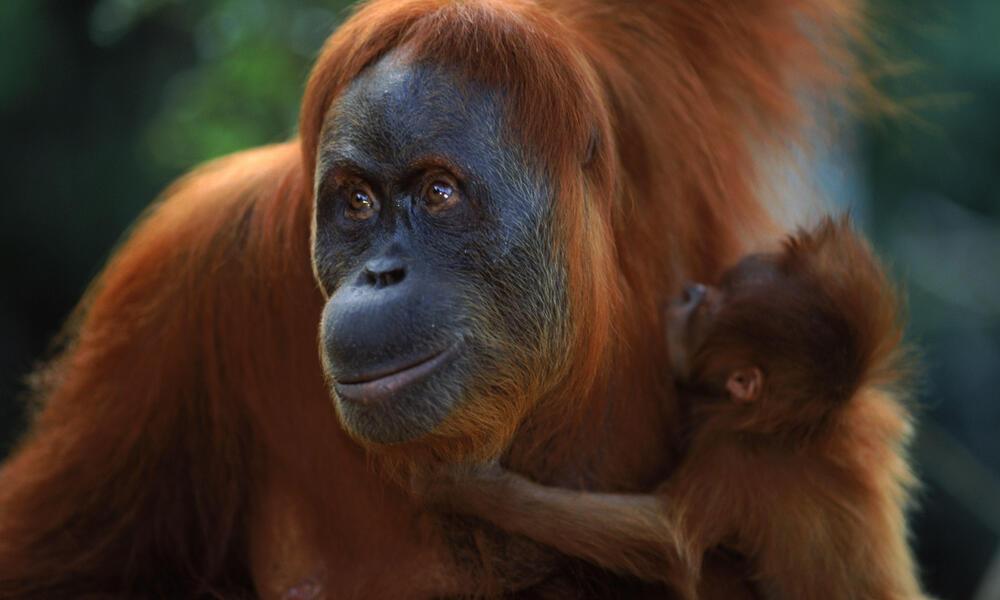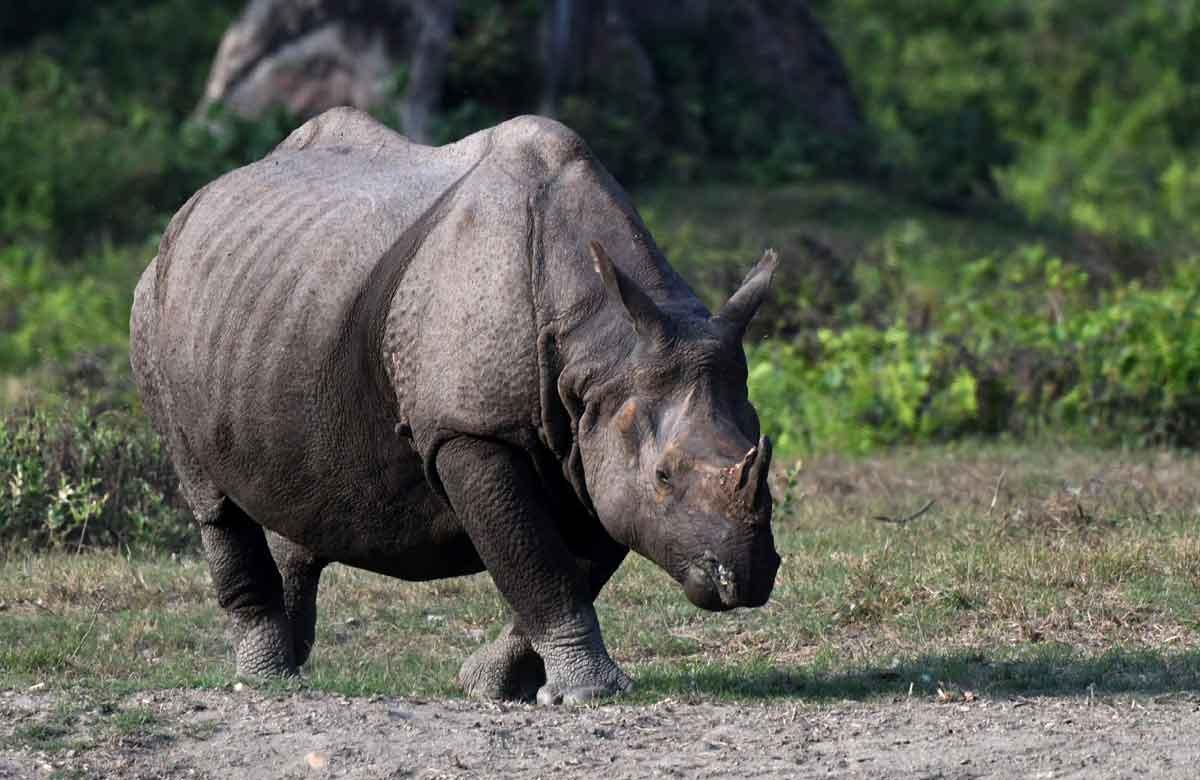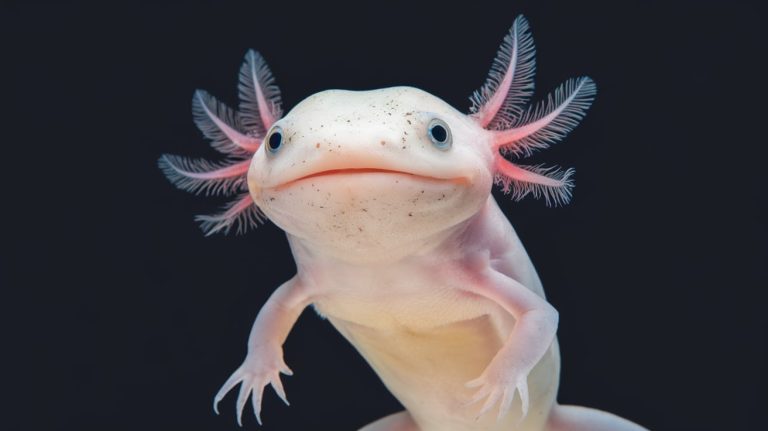21 Endangered Animals You Should Know About

Our planet’s wildlife is facing tough times. Many animals are at risk of disappearing forever. It’s a problem that affects us all, and it’s important to know which species need our help.
I want to help you understand this issue better. In this post, I’ll introduce you to 21 endangered animals that deserve our attention. You’ll learn about their unique traits, the threats they face, and why they matter to our world.
By the end, you’ll have a clear picture of these at-risk species. You’ll also discover how you can make a difference in protecting them.
Let’s get started on this eye-opening journey through the animal kingdom.
List of Endangered Animals to Explore
1. Amur Leopard

The Amur leopard is native to the Russian Far East and northeastern China. It has a beautiful, thick, and spotted coat, which helps it blend into its snowy surroundings. The Amur leopard typically has a lifespan of 10-15 years in the wild.
- Scientific Name:Panthera pardus orientalis
- Geographical Location: Russian Far East, northeastern China
- Conservation Status: Critically Endangered
- Threats: Poaching, habitat destruction, climate change
- Interesting Fact: The Amur leopard can leap up to 19 feet horizontally and 10 feet vertically.
2. Sumatran Orangutan

The Sumatran orangutan is native to the island of Sumatra in Indonesia. It is characterized by its reddish-brown fur and long arms, which it uses to swing through trees. Sumatran orangutans can live up to 30-40 years in the wild.
- Scientific Name:Pongo abelii
- Geographical Location: Sumatra, Indonesia
- Conservation Status: Critically Endangered
- Threats: Deforestation, illegal pet trade, habitat loss
- Interesting Fact: Sumatran orangutans are the most arboreal of the great apes, spending nearly all of their lives in trees.
3. Hawksbill Turtle

The Hawksbill turtle is found in tropical coral reefs and has a distinctive narrow, pointed beak that resembles a hawk’s bill. It is known for its colorful shell, which is highly prized in the illegal trade. Hawksbill turtles can live for 30-50 years.
- Scientific Name:Eretmochelys imbricata
- Geographical Location: Tropical coral reefs around the world
- Conservation Status: Critically Endangered
- Threats: Illegal trade, habitat loss, pollution
- Interesting Fact: Hawksbill turtles help maintain the health of coral reefs by controlling sponge populations, which would otherwise overgrow corals.
4. Black Rhino

The Black Rhino is native to eastern and southern Africa and is known for its hooked upper lip, which it uses to grasp leaves and branches. It has a lifespan of about 35-50 years in the wild.
- Scientific Name:Diceros bicornis
- Geographical Location: Eastern and southern Africa
- Conservation Status: Critically Endangered
- Threats: Poaching for their horns, habitat loss
- Interesting Fact: Black rhinos can run up to 35 miles per hour, making them one of the fastest large mammals.
5. Vaquita

The Vaquita, the world’s rarest marine mammal, is native to the northern part of the Gulf of California. It is a small porpoise with a distinctive dark ring around its eyes and dark patches on its lips. Vaquitas have a lifespan of about 20 years.
- Scientific Name:Phocoena sinus
- Geographical Location: Northern Gulf of California, Mexico
- Conservation Status: Critically Endangered
- Threats: Bycatch in illegal gillnets, habitat loss
- Interesting Fact: The Vaquita is so rare that it was only discovered in 1958, and fewer than 20 individuals are believed to remain today.
6. Mountain Gorilla

Mountain Gorillas are found in the mountainous regions of central Africa. They have long, thick fur to keep them warm in cold temperatures and can live up to 35-40 years in the wild.
- Scientific Name:Gorilla beringei beringei
- Geographical Location: Virunga Mountains, Bwindi Impenetrable Forest
- Conservation Status: Endangered
- Threats: Habitat destruction, poaching, disease
- Interesting Fact: Mountain gorillas share 98% of their DNA with humans, making them one of our closest relatives.
7. Sumatran Elephant

The Sumatran Elephant, one of the smallest Asian elephant subspecies, is native to Sumatra, Indonesia. It has a lifespan of about 60-70 years in the wild and is recognized for its smaller size and light skin compared to other elephants.
- Scientific Name:Elephas maximus sumatranus
- Geographical Location: Sumatra, Indonesia
- Conservation Status: Critically Endangered
- Threats: Habitat loss, human-wildlife conflict, illegal logging
- Interesting Fact: Sumatran elephants play a crucial role in their ecosystem by dispersing seeds and maintaining forest biodiversity.
8. Saola

The Saola, also known as the Asian Unicorn, is a mysterious and rare mammal found in the Annamite Range of Vietnam and Laos. It has long, straight horns and a sleek body, and it is believed to have a lifespan of around 10-15 years.
- Scientific Name:Pseudoryx nghetinhensis
- Geographical Location: Annamite Range, Vietnam and Laos
- Conservation Status: Critically Endangered
- Threats: Hunting, habitat fragmentation
- Interesting Fact: The Saola was only discovered in 1992, making it one of the most significant zoological discoveries of the 20th century.
9. Javan Rhino

The Javan Rhino is one of the rarest large mammals in the world, found only in Ujung Kulon National Park in Indonesia. It has a single horn and a thick, armor-like hide. Javan rhinos can live up to 35-40 years.
- Scientific Name:Rhinoceros sondaicus
- Geographical Location: Ujung Kulon National Park, Indonesia
- Conservation Status: Critically Endangered
- Threats: Habitat loss, poaching
- Interesting Fact: There are only about 60 Javan rhinos left in the wild, all residing in a single location in Indonesia.
10. Snow Leopard

The Snow Leopard, often called the “ghost of the mountains,” is native to the mountain ranges of Central and South Asia. It has thick, smoky-grey fur with black rosettes and lives for about 15-18 years in the wild.
- Scientific Name:Panthera uncia
- Geographical Location: Central and South Asia
- Conservation Status: Vulnerable
- Threats: Poaching, habitat loss, climate change
- Interesting Fact: Snow leopards can jump as far as 50 feet in a single leap, helping them navigate the steep and rugged terrain of their habitat.
11. Cross River Gorilla

The Cross River Gorilla is a critically endangered subspecies of the western gorilla, found in the forested hills and mountains of Nigeria and Cameroon. It has a more slender body and lighter fur compared to other gorilla species, with a lifespan of 35-50 years.
- Scientific Name:Gorilla gorilla diehli
- Geographical Location: Nigeria and Cameroon
- Conservation Status: Critically Endangered
- Threats: Habitat loss, hunting, disease
- Interesting Fact: The Cross River gorilla is the most endangered great ape, with fewer than 300 individuals remaining.
12. Yangtze Giant Softshell Turtle

The Yangtze Giant Softshell Turtle is the world’s largest freshwater turtle, native to the Yangtze River and parts of China and Vietnam. It has a broad, flattened body with a leathery shell and can live for over 100 years.
- Scientific Name:Rafetus swinhoei
- Geographical Location: Yangtze River, China, and Vietnam
- Conservation Status: Critically Endangered
- Threats: Habitat destruction, pollution, hunting
- Interesting Fact: Only three known individuals of this species are left, making it one of the most critically endangered animals on the planet.
13. Indian Vulture

The Indian Vulture, native to the Indian subcontinent, is known for its large size, pale body, and dark wings. It has a lifespan of about 20-25 years in the wild.
- Scientific Name:Gyps indicus
- Geographical Location: Indian subcontinent
- Conservation Status: Critically Endangered
- Threats: Poisoning from the veterinary drug diclofenac, habitat loss
- Interesting Fact: Indian vultures are crucial for controlling disease outbreaks by disposing of animal carcasses.
14. Bornean Orangutan

The Bornean Orangutan is native to the island of Borneo and is characterized by its shaggy, reddish-brown fur and expressive face. It can live up to 35-45 years in the wild.
- Scientific Name:Pongo pygmaeus
- Geographical Location: Borneo, Indonesia, and Malaysia
- Conservation Status: Critically Endangered
- Threats: Deforestation, illegal pet trade, habitat loss
- Interesting Fact: Bornean orangutans share about 97% of their DNA with humans and are highly intelligent, using tools in the wild.
15. Kakapo

The Kakapo, or “owl parrot,” is a flightless parrot native to New Zealand. It has moss-green plumage, a distinctive facial disc, and can live for over 90 years, making it one of the longest-living birds.
- Scientific Name:Strigops habroptilus
- Geographical Location: New Zealand
- Conservation Status: Critically Endangered
- Threats: Predation by introduced species, habitat loss
- Interesting Fact: The Kakapo is the world’s only flightless parrot, and it is also nocturnal, relying on its strong sense of smell to find food.
16. Iberian Lynx

The Iberian Lynx is native to the Iberian Peninsula, primarily in Spain and Portugal. It has distinctive tufted ears, a short tail, and spotted fur, which helps it blend into its woodland habitat. The Iberian Lynx typically has a lifespan of about 13 years in the wild.
- Scientific Name:Lynx pardinus
- Geographical Location: Iberian Peninsula (Spain and Portugal)
- Conservation Status: Endangered
- Threats: Habitat loss, decline in prey (rabbits), road accidents
- Interesting Fact: The Iberian Lynx is the most endangered cat species in the world, but its population has been slowly increasing due to conservation efforts.
17. Addax

The Addax, also known as the white antelope or screwhorn antelope, is native to the Sahara Desert in Africa. It has a pale coat that reflects sunlight, spiral horns, and a lifespan of up to 19 years in the wild.
- Scientific Name:Addax nasomaculatus
- Geographical Location: Sahara Desert, Africa
- Conservation Status: Critically Endangered
- Threats: Poaching, habitat destruction, climate change
- Interesting Fact: The Addax is highly adapted to desert life and can go for weeks without water, obtaining moisture from the plants it eats.
18. Sumatran Rhinoceros

The Sumatran Rhinoceros is the smallest and most endangered of the rhino species, found in isolated pockets of Indonesia. It has a hairy, reddish-brown coat and can live up to 30-35 years in the wild.
- Scientific Name:Dicerorhinus sumatrensis
- Geographical Location: Sumatra and Borneo, Indonesia
- Conservation Status: Critically Endangered
- Threats: Poaching, habitat loss
- Interesting Fact: Sumatran rhinos are the only Asian rhinos with two horns and are also the most vocal of the rhino species.
19. Eastern Lowland Gorilla

The Eastern Lowland Gorilla, also known as the Grauer’s gorilla, is native to the lowland tropical forests of eastern Democratic Republic of the Congo. It has a stocky body, large hands, and a lifespan of about 35-50 years in the wild.
- Scientific Name:Gorilla beringei graueri
- Geographical Location: Eastern Democratic Republic of the Congo
- Conservation Status: Critically Endangered
- Threats: Habitat destruction, poaching, civil unrest
- Interesting Fact: The Eastern Lowland Gorilla is the largest of the four gorilla subspecies, with males weighing up to 440 pounds.
20. Gharial

The Gharial, also known as the fish-eating crocodile, is native to the rivers of the Indian subcontinent. It has a long, narrow snout with sharp teeth and a lifespan of about 40-60 years in the wild.
- Scientific Name:Gavialis gangeticus
- Geographical Location: Rivers of the Indian subcontinent
- Conservation Status: Critically Endangered
- Threats: Habitat loss, pollution, poaching
- Interesting Fact: The Gharial is one of the longest of all living crocodilians, reaching up to 20 feet in length.
21. Madagascar Big-headed Turtle

The Madagascar Big-headed Turtle is a rare species found in freshwater lakes and rivers of Madagascar. It has a large, distinct head, a broad shell, and a lifespan of 50-100 years.
- Scientific Name:Erymnochelys madagascariensis
- Geographical Location: Freshwater lakes and rivers in Madagascar
- Conservation Status: Critically Endangered
- Threats: Habitat destruction, hunting, pollution
- Interesting Fact: The Madagascar Big-headed Turtle is considered one of the world’s most endangered turtles, with very few individuals remaining in the wild.
Conclusion
Now you know about 21 amazing animals that need our help. These creatures are more than just pretty faces – they play big roles in keeping our planet healthy. Losing them would be bad for everyone.
But here’s the good news: you can make a difference! Start by sharing what you’ve learned with your friends and family. You could also support wildlife groups or make choices that are kinder to animals.
Remember, every little bit helps. Even small actions can add up to big changes for these endangered animals. So, what will you do to help? Maybe you could start by picking one animal from our list and learning more about it.
Your next move could be the one that helps save a species!





